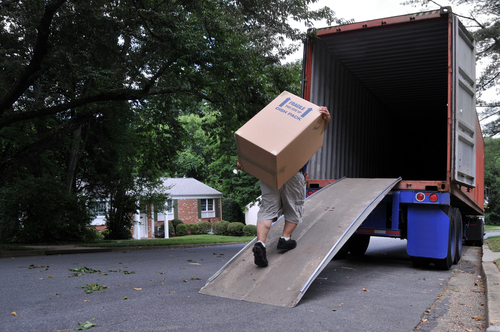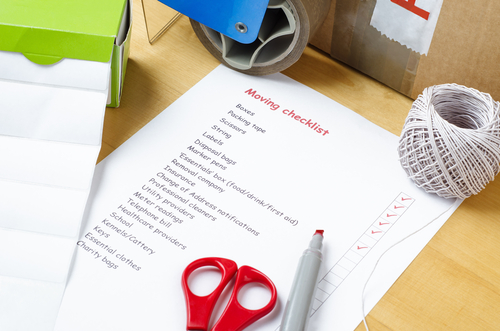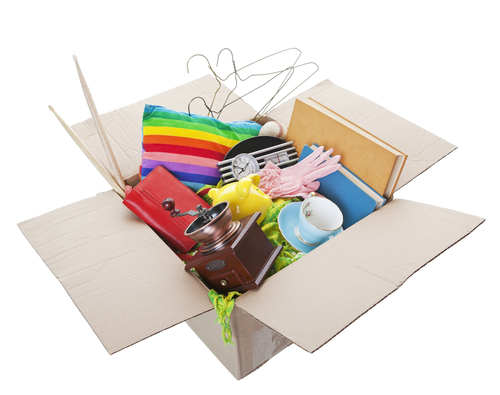Moving Expenses You Can Benefit From

Here in the US, one of the top reasons people move is because of a new job or job transfer. Uprooting your life for your career can be stressful, not to mention time-consuming and expensive. Thankfully, the IRS offers some relief when it comes to the cost of a job-related move.
What Qualifies as a Deductible Move?
In order for you to claim what the IRS considers qualified deductible moving expenses, your move must be closely related, in time and place, to the start date and location of your new job and meet the criteria of what the IRS calls “the distance test” and “the time test.”
Moving expenses you incur within one year from the date you first report to work at your new job are considered “closely related in time” by the IRS. If you do not move within a year of your start date, you may still be able to deduct moving expenses if you can show there were circumstances that prevented you from making the move earlier. Of course, many people move before the start date of their new job. “Closely related in time” addresses those who start a new job at a new location before they actually move.
“Closely related in place” means the distance from your new home to your new job is not greater than the distance from your old home to the new job. You may still be able to deduct moving expenses in you can show you are required to live in a new home farther from the new job than your old home as a condition of your employment or if you can show that you will spend less time or money commuting to your new job from the location of your new home.
In order to meet the distance test, your new workplace must be at least 50 miles farther from your old home than your old job location was from your old home. To put it into perspective, if your old job is in downtown Houston, your new job must be at least 50 miles outside of downtown to qualify.
To qualify for deductions, a job-related move must also meet the time test, which means you must work full-time for at least 39 weeks during the first 12 months immediately following your move. If you are self-employed, you will not only need to fulfill the time test requirement, but also work full-time for a total of 78 weeks during the first two years (e.g., 24 months or 104 weeks) immediately following your arrival to your new home. These weeks do not have to be consecutive.
For married couples, only one spouse needs to pass the distance or time test for a move to be deductible. One spouse can satisfy the distance requirement and the other spouse can satisfy the time requirement. Members of the armed forces who move because of military orders or a permanent change of station are exempt from the distance and time tests.
What Can You Deduct?
Your moving expenses are deducted from your adjusted gross income and can include things like the actual amount of gas or oil used by your vehicle for the move or the mileage rate of 24 cents per mile. There are smartphone apps available that can help you track your mileage. Parking fees and tolls incurred during the move are also deductible.
Other deductible moving expenses include the cost of packing and shipping or transporting your “household goods and personal effects” as well as members of your household to your new home. Save all of your receipts!
A few things that do not qualify as a moving expense include:
- Expenses related to buying or selling a home such as closing costs, mortgage fees, home improvements or new furnishings
- Loss on the sale of your old home
- Charges for signing or breaking a lease
- New car tags and licenses
- Security deposits
If you are planning or have recently made a job-related move and are hoping to deduct your moving-related expenses, consider hiring a tax accountant. A good accountant will point out all of the items you can deduct, items that you might miss otherwise, as well as flag any expenses that are not deductible. Investing a few hundred bucks in the services of a tax accountant will save you a headache of trying to get a grip on the latest tax codes (and prevent an audit!).
For more information about moving related expenses, visit the US Tax Center
And of course, for more information about moving and packing services in Houston, contact Max Movers Inc..
Efficiently Packing a Moving Truck

It’s moving day! How do you know? Because a large moving truck is parked outside ready to transport your belongings across town, or perhaps across the country. If you’re packing it yourself, you’ll need a strategic plan for getting everything in there; otherwise you could end up wasting a lot of time, or worse, damaging some of your belongings.
After boxing up your belongings, and safely wrapping the furniture and television set in padding and plastic wrap, the next step is getting all of that into a moving truck. Whether you are planning to load a moving truck yourself or having the trusted professionals of Max Movers Inc. do the job, understanding the techniques for safely and efficiently packing a truck will save you time and spare your belongings from damage.
First Things First
An oft-forgotten step is checking with the city to determine whether or not you will need a parking permit for the moving truck. Make sure the moving truck will be able to park as close as possible to your home or office. This isn’t a big deal in residential areas, but it can be tricky in urban areas with lots of traffic.
Keep the route from your door to the truck free of items that can trip a person carrying a heavy item. Uneven sidewalks may require pads or even boards to be laid down to make it safer to walk and push a dolly to and from the truck. During loading, one or two people should remain inside the trailer to stack and load items (as well as to prevent items from being stolen). Consider covering the floor of the truck’s trailer with padding or paper to cut down on dirt and dust, and to provide some traction for the loaded items.
Loading and Packing a Moving Truck
Our trusted employees are experts in loading and packing. If you plan to do the loading yourself, keep the following tips in mind:
- Load your items working from the front of the trailer (near the cab of the truck) to the back.
- Load heavy items first, such as heavy furniture and appliances, and place them against the walls of the truck.
- Stack medium to smaller sized items and boxes in a single tier across the width of the truck and up to the ceiling, with the heaviest items on the bottom, the lightest on top.
- Make sure everything is packed as tightly as possible. Furniture pads, rugs and linens can be used to fill in empty spaces and provide additional protection once the truck starts moving.
- Use ratchet straps and bungee cords to tie down and secure loaded items and prevent shifting.
- Paintings, large photos and most definitely mirrors should be packed upright between mattresses.
- Secure desk, cabinet and dresser drawers with stretch wrap, which only sticks to itself and protects the surfaces of your furniture.
- Lawn mowers, motorcycles, ATVs and any other gas-operated items need to be drained of flammable fluids before they can be moved. Use extra strong moving straps and, if necessary, moving blocks, to secure such items.
- Fragile or especially valuable items, such as antiques, computer and medical equipment, and fine art objects may require specialty moving services.
Protect Yourself
Your belongings aren’t the only things you have to protect during moving; the process can take a physical toll on your body as well. Using a dolly to move heavier items is helpful, as is remembering to always, always lift with your legs, not with your back. Some other helpful things to remember when loading and packing a moving van include:
- Wear leather gloves and sturdy, supportive footwear.
- When carrying items, keep your back as straight as possible.
- Make sure your feet are firmly placed, with one foot slightly ahead of the other, before picking up heavier items.
- If you have to strain to lift an item, it’s too heavy. Get a second (or third) person to help you.
- Take breaks and drink water, especially when moving a large number of items over the course of several hours.
The trusted employees at Max Movers Inc. can help you load and pack your belongings safely and efficiently. Contact us today to learn more about our moving, packing and unpacking and interior design services.
Making the Moving Process Easier: A Checklist

There’s really no way around it- moving is stressful. However, with advance planning and the right packing strategy, you can make things easy on yourself and keep the chaos of moving to a minimum. Here are our top 10 tips to ensure a smooth move.
1. You know what they say about the early bird…
Start packing as early as possible to minimize stress in the week leading up to your move. Depending on the size of your home and how much assistance you’ll have packing, it’s not unreasonable to begin months in advance. Things that are out of season or that you don’t use very often should get boxed up first. This is also a great time to get rid of things you don’t need.
2. Like Santa Claus, make a list and check it twice.
Keep written records organized in a notebook and include phone numbers, names and appointment times. Make notes of who you spoke to when scheduling workers or trucks and ask for that person if you have to call back so you don’t have to explain your situation every time you call. Keep lists of valuable items that you want to personally watch be packed.
3. Keep a master file for your boxes.
Most people label the boxes they pack, but few of them number the boxes. Each time a box gets taped up, write a number on it and log the box number and contents in a notebook. While the box might say “bedroom clothes,” the master list can tell you, “scarves, handbags and gloves.” Then if you get behind on your unpacking and need to find a specific item, you can use the master list to help you determine exactly which box to look through.
4. Double the amount of supplies you think you’ll need.
Most people underestimate how much stuff they have, and consequently end up scrambling for more tape or boxes within the finals hours of packing. Avoid this stressful scenario by stocking up on packing essentials.
5. Let no linen go wasted.
Use soft items you already own as packing material to protect more delicate things. Wrap breakables in dish cloths, use placemats to stack plates and put picture frames inside the folds of your towels. This also cuts down on the mess when you get to your destination.
6. Wrap breakables in non-printed paper.
Once you’ve run out of soft things to use as packing material, use blank newspaper or plain packing paper. Avoid wrapping soft or valuable things in printed newsprint; the dye will rub off and stain them. Wrap each item loosely in one or two sheets of paper. Don’t forget to recycle all that paper when you unpack!
7. Plan ahead if you have plants.
Trying to move houseplants is often more trouble than it’s worth, so consider giving them to friends. For plants that you want to take and think will thrive at the new digs (Is there enough window light for indoor plants? Is the temperature right for outdoor plants?), consider bringing only a seedling instead of the whole plant, and regrow it once you get settled.
8. Use rugs wisely.
To help move heavy boxes and furniture, place them on a rug and pull the rug across the floor. In addition to saving your back, this will prevent damage to hardwood floors.
9. Get a traction mat.
This less-often-used moving accessory will help you get from point A to point B with ease and safety. Traction mats are a must if you’re moving furniture on rainy days, across slick floors or over gravel.
10. Plan a “no pack sack.”
No matter how organized your moving process, some items inevitably end up missing for a few days or weeks. Put items you can’t afford to lose track of in an easily-identifiable bag and keep it on your person or locked safely in your car during the move. Put medications, phone and laptop chargers, toiletries, IDs and birth certificates, travel tickets, high-value jewelry, a change of clothes, an emergency kit, etc. in this bag.
Final Tip
There are plenty of ways to simplify your packing and moving process, but the bottom line is that it’s going to take a lot of time, forethought and elbow grease. To save yourself the trouble, you can always call Max Movers Inc. to do some or all of the packing and unpacking. Find out more.
Out with the Old

Owning things is all about balance. Too little and your day-to-day life doesn’t flow well, but too much can make your home feel cramped and your thoughts feel cluttered. Almost everyone can benefit from auditing their possessions and scaling back on what they own. Doing so can make a house appear cleaner and more open, and can really streamline your regular activities around the home.
“Out with the old, in with the new” always starts out with optimistic intentions, but in reality, deciding what to keep and what to ditch can turn into a tug-of-war between your sentimental side and your practical side, especially if you’ve accumulated quite a collection of stuff over the years.
The surest and fastest way to complete this sort of cleaning-out process is to get organized from the get-go with a clear plan of how you’re going to handle the selection process. Write your plan down if you need to, and have your Keep, Donate, Trash and Upcycle boxes ready and labeled at the start.
The Selection Process
Making justifications for keeping everything will inevitably lead to rooms cluttered with ages-old Halloween costume pieces, 26 more screwdrivers than you need, toys with dust-lined wheels, and dated décor.
Every household has its own standards for what goods to consider keepers. Sometimes it’s nothing more than what it absolutely need to get by, while others hold onto things with sentimental value. It’s up to you to decide what you want to keep – and why.
But the entire point of de-cluttering is to keep only the things that have value to you, whether that value be material, sentimental or functional. If you’re planning on moving any time in the near future, cutting back and cutting down makes the moving process go much, much smoother. When undertaking a major streamlining project, think about what it is you genuinely love and genuinely use – these are the only things that absolutely must stay.
General rule: If you haven’t thought about it or used it in the last year and don’t plan on using it in the next two weeks, get it out of there.
The Removal Process
One of the most meaningful ways to unload your excess home goods is also one of the simplest: You can give new life to just about anything in good condition by donating them to reputable, local donation centers or to others in your community who may need them.
For a little extra cash, you can also try selling furniture, home entertainment systems and other valuables either online or at a resale shop. Just remember, you’re most likely to find a buyer through one of these outlets if the product in question is in good condition.
Yard sales are bargain shoppers’ gold, so this is another viable option if your neighborhood allows it. If you happen to have neighbors similarly looking to unload some of their own possessions, partner up and make a large event of it. Get traffic by posting “Multi-family Yard Sale” signs on major streets near your neighborhood.
Where to Donate
Just an FYI about the places where you’re planning on donating items: Make sure to visit their websites or contact them before dropping off what you’d like to give, as they may not accept certain item based on surplus or no real need. No matter what, your donations need to be clean and in working order – no stained clothing, cracked wall mirrors or rusted-out wagons.
Some of the most desired items accepted by local and national organizations are:
- Clothes
- Housewares (décor, kitchen utensils, furniture etc.)
- Electronics (especially cell phones and computers)
- Toys
- Linens and blankets
- Movies and music
- Books
- Athletic equipment
- Unopened makeup
- Unused craft kits
- Rain gear
- Unopened personal care items (hair products, cotton balls, lotions, toothpaste etc.)
- Unused art supplies
- Office supplies (pens, pencils, notepads, calculators etc.)
- Jewelry and watches
This is by no means a comprehensive list of what these organizations want. However, they are some of the easier to donate – not to mention most commonly found around the house come cleaning time!
Research or ask around to see which of the following nonprofits in your community could really use what you have to give:
- Schools
- Places of worship
- Community centers
- Homeless shelters
- Women’s shelters
- Libraries
- Veteran’s organizations (for soldiers both at home and abroad)
- Child advocacy organizations
What Gets Trashed (or Upcycled)
Don’t feel bad for throwing away an item that’s too worn out to be of real use. Few consumers and nonprofits will bother paying for repairs, especially if they can find similar used goods in better condition.
In the case of broken electronics, seek out the nearest recycling center specializing in e-waste. Simply throwing out a busted television, cell phone or printer can lead to serious environmental damage because of the metals involved in the construction process.
If you’re particularly crafty, however, some bits and pieces of a too-broken-to-sell-or-donate item may be salvaged for a creative project. Gears from a watch beyond repair can find life in a new pair of earrings, for example. If the pages of a hardbound book are too musty to read, but the cover remains in good condition, use it as a decorative items or a stowaway box in which to hide small items in plain sight. Children can make a craft project out of almost anything, so plan an imagination day with them to see what they can come up with for your seemingly ordinary old items. There are thousands of DIY options for upcycling things you don’t need anymore, so seek them out!
Consult the Experts
Max Movers Inc. has served the Houston community since 1989. We know how to help you streamline your life and reduce clutter to ensure a quick, painless move. Contact us today to ask about our packing, unpacking or interior design services.